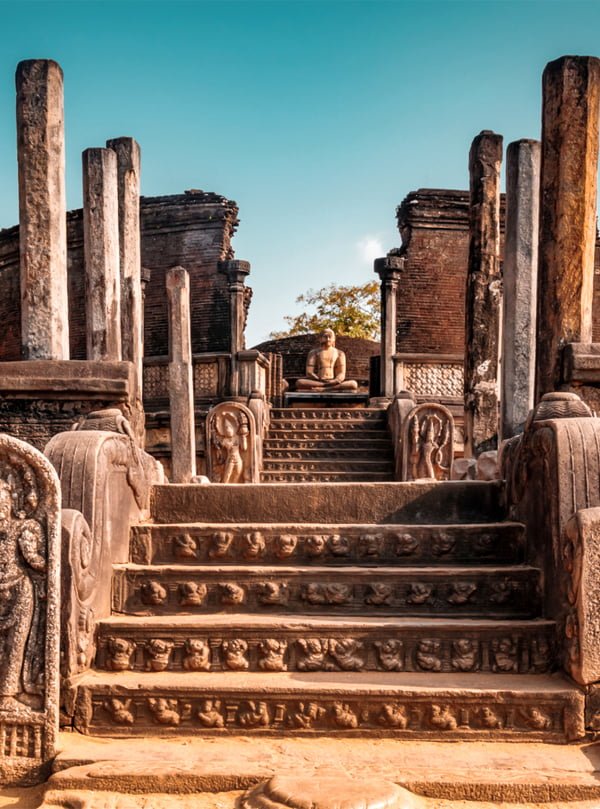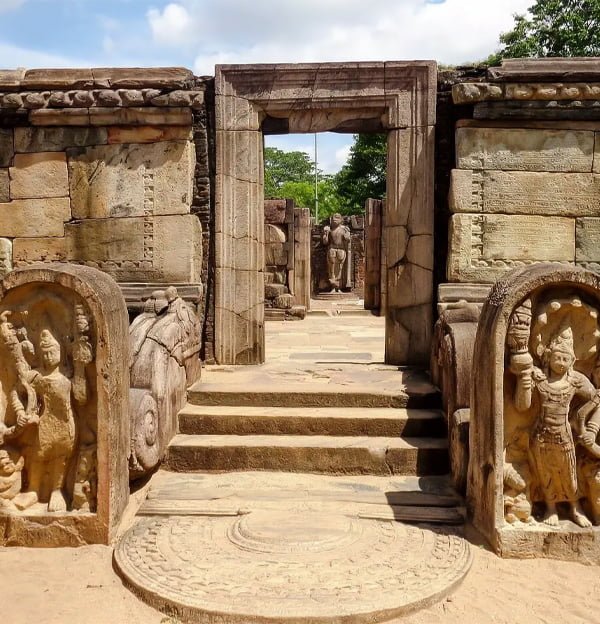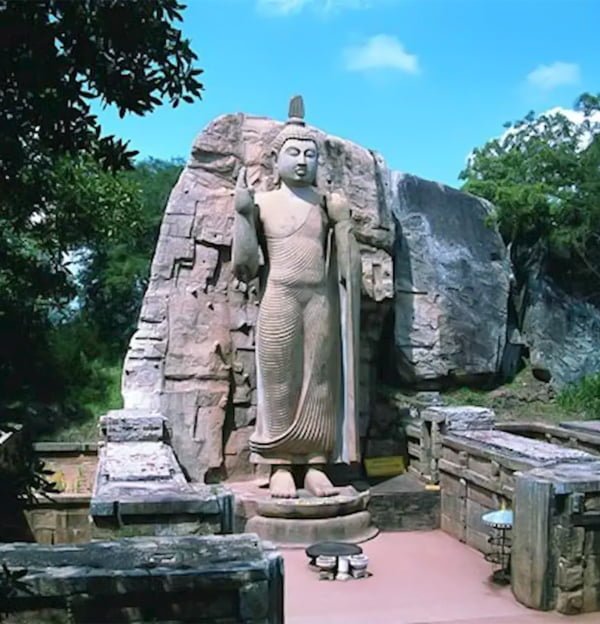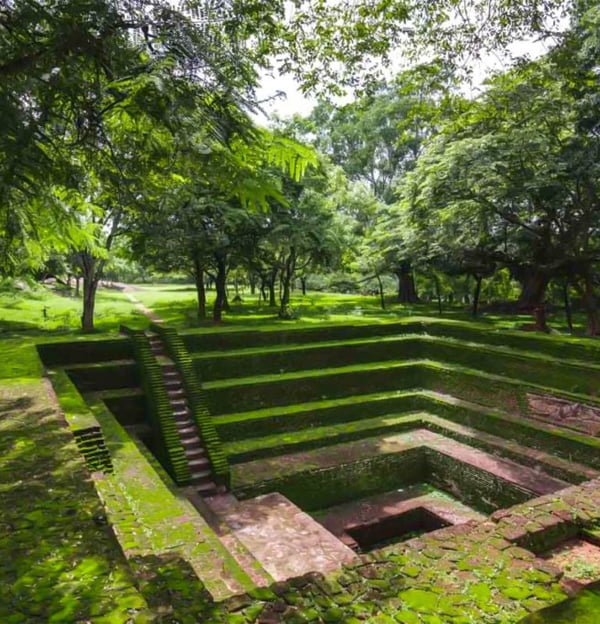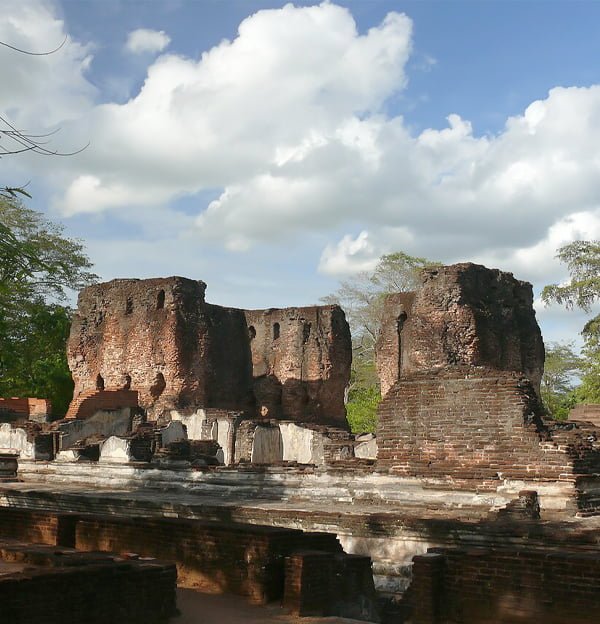The second ancient kingdom of Sri Lanka.
Polonnaruwa stands as a cornerstone of Sri Lanka’s cultural triangle, representing one of the most significant kingdoms in the nation’s storied history. Flourishing during the 11th to 12th centuries AD, the remnants of its glory days still endure, meticulously preserved amidst the passage of time. Among these remnants, the colossal statue of Polonnaruwa’s illustrious monarch, Sri Parakramabahu, stands as a testament to the kingdom’s grandeur. Additionally, the sprawling expanse of the ‘Sea of Parakrama,’ a monumental reservoir crafted by the king himself in the 12th century, remains a striking feature of the landscape.
Visitors to Polonnaruwa are treated to a plethora of awe-inspiring attractions, including the Menik Vihara, Rankot Vihara, Alahana Pirivena, and Jetavana monasteries, each offering insights into the kingdom’s rich religious and architectural heritage. The Gal Vihara complex captivates with its remarkable Buddha statues carved from solid rock, while the Lankatilaka shrine exudes an air of spiritual serenity. The King’s Council Chamber and the Lotus Bath provide further glimpses into the royal life and administrative prowess of Polonnaruwa’s rulers. For history enthusiasts and culture aficionados, these revered sites within Polonnaruwa are indeed must-see destinations, offering a profound connection to the island’s illustrious past.
Polonnaruwa, situated in the North Central Province of Sri Lanka, stands as a UNESCO World Heritage Site and a testament to the island’s rich historical and cultural legacy.
Historical Significance: Polonnaruwa served as the capital of Sri Lanka during the reign of the Chola dynasty in the 10th century AD and reached its zenith under the rule of King Parakramabahu I in the 12th century AD. It is renowned as one of the greatest kingdoms in Sri Lanka’s history and played a pivotal role in shaping the island’s culture, religion, and architecture.
Archaeological Ruins: The archaeological ruins of Polonnaruwa are spread across a vast area and include impressive structures such as palaces, temples, monasteries, and stupas. Visitors can explore the remains of the Royal Palace complex, the Quadrangle with its sacred buildings, and the ancient city walls and gates, which provide insights into the city’s layout and architecture.
Sacred Sites: Polonnaruwa is home to several sacred sites of Buddhist worship, including the Gal Vihara, a rock temple famous for its exquisite Buddha statues carved into the granite cliff face. The Vatadage, a circular relic shrine with intricately carved stone pillars, is another highlight, as is the Lankatilaka temple with its towering brick walls and elaborate carvings.
Water Management: One of the remarkable features of Polonnaruwa is its sophisticated water management system, which included vast reservoirs, canals, and irrigation networks. The ‘Sea of Parakrama’ reservoir, constructed by King Parakramabahu I, is one of the largest ancient reservoirs in Sri Lanka and served as a vital source of water for agriculture and cultivation.
Wildlife and Nature: The archaeological sites of Polonnaruwa are set amidst a picturesque landscape of lush greenery, tranquil lakes, and abundant wildlife. Visitors can spot a variety of bird species, monkeys, and other animals while exploring the ancient ruins, adding to the allure of the experience.
Museum and Visitor Center: The Archaeological Museum in Polonnaruwa provides detailed information about the history, culture, and archaeology of the ancient city through its exhibits and displays. The visitor center offers maps, guides, and audio tours to enhance the visitor experience and provide insights into the significance of the archaeological sites.
Overall, Polonnaruwa offers a captivating journey through Sri Lanka’s ancient past, with its archaeological wonders, sacred sites, and rich cultural heritage providing a fascinating glimpse into the island’s history and civilization.





